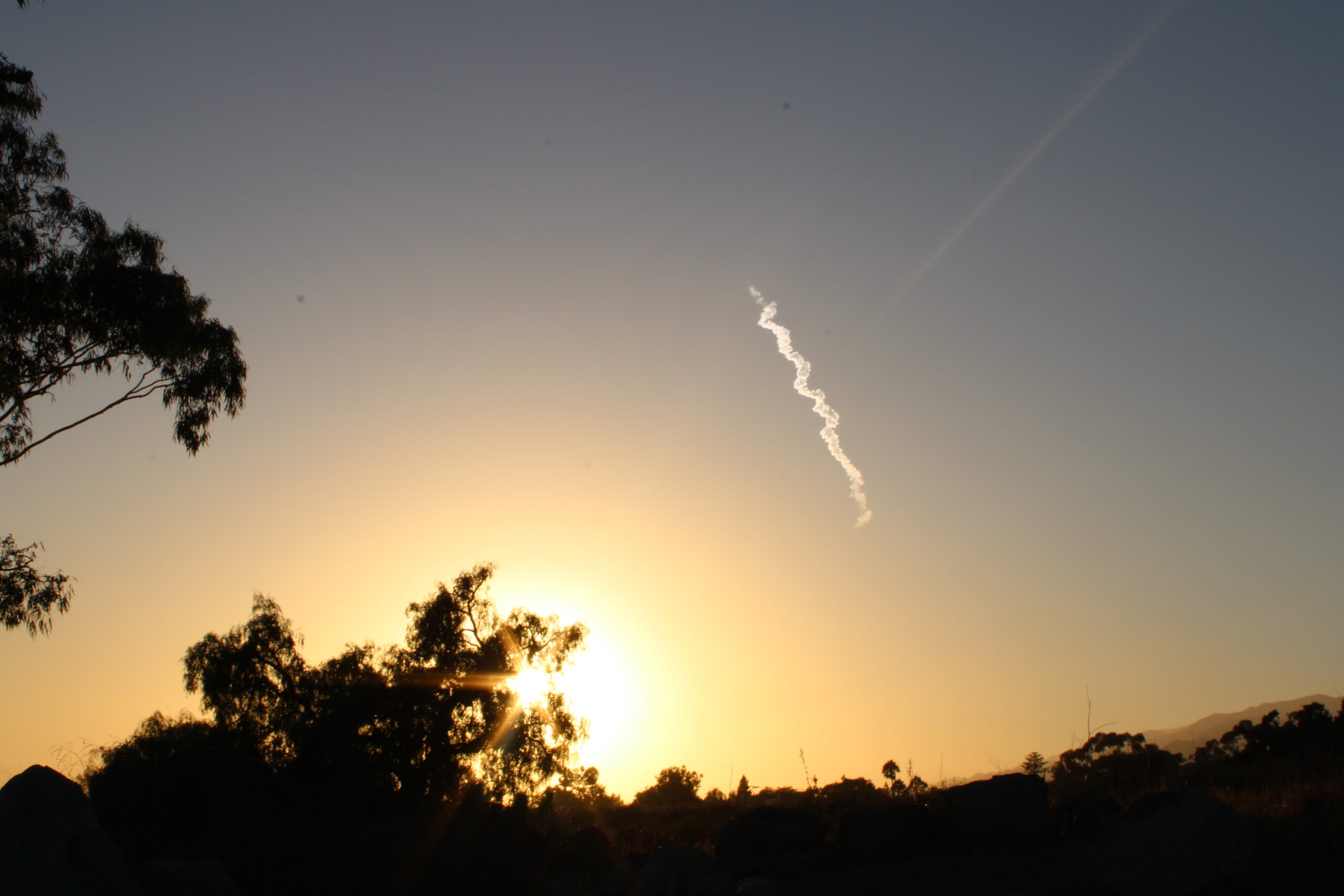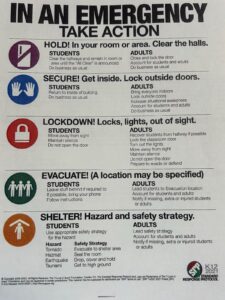Have you ever seen a giant wisp of smoke in the sky? Something too uniform to be a cloud? Or an object that seems to be moving mysteriously fast over Santa Barbara? Well that, unfortunately, is not a UFO as some residents think, but instead most likely a Falcon 9 rocket launched from Vandenberg Space Force base. Vandenberg is located in Lompoc, one hour north of Santa Barbara, and is a 99,604 acre military base that launches an array of military and private spacecrafts. One of their most notable users is SpaceX, the Elon Musk funded private space exploration company with the goal of getting humans on mars. The rocket they have been launching for the past decade is the famed Falcon 9, and is the rocket that most commonly lights up the Santa Barbara sky.
The most recent Falcon 9 launch as of writing took place on September 12, 2024 at exactly 6:45 p.m. It successfully launched 21 Starlink satellites into low-Earth orbit. The launch cost was 52 million dollars. Eight minutes after liftoff, stage one of the rocket landed on the SpaceX drone ship on the port of Long Beach, California. It could be seen briefly through the Santa Barbara area before disappearing into the fog. The Falcon 9 is projected to launch from Vanderberg later this month, once in November, and twice in December.
What makes the Falcon 9 special is that it is the first reusable rocket, which means its booster can land itself after it disconnects from its second stage. The first stage is the initial lift of the rocket, which is when the rocket is able to escape Earth’s gravitational field and get up into orbit. This is what causes the giant exhaust plumes that look like clouds to be seen over Santa Barbara after a launch. Dr. Sean Kelly, professor of Astrophysics and Astronomy at SBCC explained, “…up until SpaceX, the first stage is always just thrown away at the end of the job, right? They use this big, giant rocket full of fuel, and then after they’re finished, they let it tumble back down into Earth. And so it usually ends up in the ocean somewhere.” What SpaceX has done is instead of throwing away an over 25 million dollar booster, they reland it back on Earth to be refueled and used again. This has lowered the cost of launching space crafts tremendously, and allows for a much higher frequency of launches, which means more rockets over our heads.
Observant residents may have noticed that the rocket sometimes leaves behind bright colors in their exhaust plumes, scientifically known as condensation trails (or contrails), after a launch. The rocket has to push itself forward in order to move, but in space there appears to be nothing to push off of. The rocket is actually pushing on gasses in the atmosphere, and pushing them back out of the engine as fast as it can, thus causing the contrail. “The harder and faster they make the particles of gas come out the back of the rocket engine, the more the gasses are going to push forward on the rocket. And that’s actually what’s propelling it forward,” states Dr. Kelly. The particles that are expelled allow moisture in the atmosphere to form small droplets of water, making condensation. The coloration depends on the time of day the rocket is launched. If a launch occurs during sunset or at dusk, sometimes the contrail appears as the same colors associated with the setting sun; this is because even if the sun is set from our point of view, the lightwaves are able to reach the rocket because it is traveling in the upper atmosphere of earth where the sun still reaches.
So what is the Falcon 9 used for? Most commonly they are used to launch Starlink satellites into space. Currently, there are 6,350 Starlink satellites in low orbit. The way we communicate with satellites is through light in the form of radio waves. A radio wave traveling at the speed of light is extremely fast, but there is still some delay. This is what we call latency, when the transmission of data up to the satellite and then back to earth is taking time. What’s different about the Starlink satellites is that they are so close to earth their latency is nearly zero, resulting in almost perfect communication. The satellites are launched all around the world in different orbits, “So in principle, when they’re finished, every place on Earth will be able to communicate with every other place. You can buy an antenna that connects to the Starlink network, and you can go camping in the most remote location and have high speed internet,” explains Professor Kelly. This network of satellites is the goal of Starlink, and the Falcon 9 helps get them there.
So why is it a privately owned company doing this and not publicly owned organizations such as NASA? Well, NASA has an extremely low threshold for error and therefore aren’t inclined to take much risk when it comes to space craft manufacturing and testing. “…They want the quality of everything to be extremely good. Like, it just can’t fail, right? Especially when there’s human beings on the line.When you build a part, it’s gotta be tested and tested and rigorously put through the ringers so that you can find out any of the mistakes that might happen,” adds Dr. Kelly. And as a consequence, it’s extremely expensive for NASA to build and test things. SpaceX, on the other hand, is willing to take a lot more risk. “And so they’ve been able to rapidly make changes to their designs….they gain some benefit from that, because they did take the risk.” Falcon 9 stage one boosters have landed successfully 350 times out of the 362 attempts as of writing. That means 12 failed launches, but those failures have paid off in SpaceX being able to rapidly change and adapt their engineering in a timeframe NASA simply can’t compete with.
There are some problems, however, with space being dominated by private companies. “Ultimately, we should not privatize space. I think in the end that would lead to a lot of problems,” Dr. Kelly states. He explained how a wealthy country such as America is capable of having a lot of power in space, adding how we should be willing to compromise and limit the presence we have above our atmosphere.“It’s not fair for us to just take what we can get. So I would be a fan of having larger programs by NASA eventually giving the capability of space travel to every human being.”
So, why are we people putting billions of dollars into space travel when there are so many problems here on earth? Professor Kelly views it like this: as a species, we are growing up in this universe. And currently we are in the toddler stage, we’re just beginning to take the first step off Earth. “It’s like telling people don’t climb any more mountains…There’s so much universe out there waiting to be explored and humans are curious and need to find out.” Furthermore, everytime we push to advance space science, life on earth benefits. Manufacturing capabilities become more advanced, cancer cells are studied in zero gravity on the International Space Station, humans learn how to purify environments, all things that help us in the now. “As we continue to push forward, we’re going to create new materials and new technology that will end up helping all of us here on Earth.” Materials on Earth are limited, but in space there is an infinite amount of resources that can be accessed and available for the whole world, if we handle it right. The Falcon 9 helps us get there. So look up once in a while, you just might be lucky enough to catch a glimpse of the future blasting over our coastal town.
Contrail from the Falcon 9 rocket launched September 12th, 2024 over the San Marcos Foothill Preserves. [Image Credit Clara Watson]






Be First to Comment